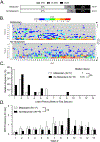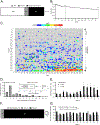Spontaneous recurrent seizures in an intra-amygdala kainate microinjection model of temporal lobe epilepsy are differentially sensitive to antiseizure drugs
- PMID: 34922908
- PMCID: PMC8815304
- DOI: 10.1016/j.expneurol.2021.113954
Spontaneous recurrent seizures in an intra-amygdala kainate microinjection model of temporal lobe epilepsy are differentially sensitive to antiseizure drugs
Abstract
The discovery and development of novel antiseizure drugs (ASDs) that are effective in controlling pharmacoresistant spontaneous recurrent seizures (SRSs) continues to represent a significant unmet clinical need. The Epilepsy Therapy Screening Program (ETSP) has undertaken efforts to address this need by adopting animal models that represent the salient features of human pharmacoresistant epilepsy and employing these models for preclinical testing of investigational ASDs. One such model that has garnered increased interest in recent years is the mouse variant of the Intra-Amygdala Kainate (IAK) microinjection model of mesial temporal lobe epilepsy (MTLE). In establishing a version of this model, several methodological variables were evaluated for their effect(s) on pertinent quantitative endpoints. Although administration of a benzodiazepine 40 min after kainate (KA) induced status epilepticus (SE) is commonly used to improve survival, data presented here demonstrates similar outcomes (mortality, hippocampal damage, latency periods, and 90-day SRS natural history) between mice given midazolam and those that were not. Using a version of this model that did not interrupt SE with a benzodiazepine, a 90-day natural history study was performed and survival, latency periods, SRS frequencies and durations, and SRS clustering data were quantified. Finally, an important step towards model adoption is to assess the sensitivities or resistances of SRSs to a panel of approved and clinically used ASDs. Accordingly, the following ASDs were evaluated for their effects on SRSs in these mice: phenytoin (20 mg/kg, b.i.d.), carbamazepine (30 mg/kg, t.i.d.), valproate (240 mg/kg, t.i.d.), diazepam (4 mg/kg, b.i.d.), and phenobarbital (25 and 50 mg/kg, b.i.d.). Valproate, diazepam, and phenobarbital significantly attenuated SRS frequency relative to vehicle controls at doses devoid of observable adverse behavioral effects. Only diazepam significantly increased seizure freedom. Neither phenytoin nor carbamazepine significantly altered SRS frequency or freedom under these experimental conditions. These data demonstrate that SRSs in this IAK model of MTLE are pharmacoresistant to two representative sodium channel-inhibiting ASDs (phenytoin and carbamazepine) and partially sensitive to GABA receptor modulating ASDs (diazepam and phenobarbital) or a mixed-mechanism ASD (valproate). Accordingly, this model is being incorporated into the NINDS-funded ETSP testing platform for treatment resistant epilepsy.
Keywords: Antiepileptic drugs; Clusters; Latent period; Pharmacoresistance; Seizures.
Copyright © 2022 The Authors. Published by Elsevier Inc. All rights reserved.
Conflict of interest statement
Declaration of Competing Interest
Cameron S. Metcalf (CSM) serves as a consultant for a consultant for Sea Pharmaceuticals. Karen S. Wilcox (KSW) serves on the scientific advisory board of Mend Neuroscience and Blackfynn, Inc. and is a consultant to Xenon Pharmaceuticals.
Figures








References
Publication types
MeSH terms
Substances
Grants and funding
LinkOut - more resources
Full Text Sources
Medical

